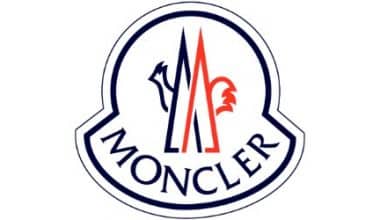Snapchat CEO Evan Speigel famously turned down a $3 billion acquisition offer from Facebook in 2013. To put things in perspective, Facebook paid $1 billion for Instagram in 2012.
And this was not the first time Facebook attempted to acquire Snapchat. Even as late as 2016, Facebook was interested in acquiring the upstart social media competitor.
However, Snapchat, like its counterpart Twitter, chose to forge its own path. We can assess whether Snapchat made the right decision in retrospect based on its current financial standing and future potential. That is exactly what we will do in this blog. But first, let’s examine how Snapchat makes money. Then we’ll see if Snapchat is profitable and how well it’s positioned in the digital advertising industry, which is becoming increasingly competitive. But first, let’s establish some context by briefly reviewing Snapchat’s founding and growth story.
What Is Snapchat?
The Snapchat app itself allows users to share images and videos with their friends and followers. Snaps, as they are known, are fleeting, with Snap Stories only available for 24 hours. Snaps can be deleted at any time by the user. The goal is to promote more natural interactions with others.
Who Are Snapchat’s Clients?
Snapchat’s target audience is Generation Z. Because the application addresses the privacy concerns of this generation. The majority of its instant messaging (IM) users are aged 13 to 34.
Snapchat is also useful for businesses and content creators, which is a little-known fact. Snapchat is a great marketing platform for both local and international brands because it offers customized advertisements that blend in with users’ experiences (rather than intruding on them as Facebook and Google ads do). Meanwhile, the company compensates content creators through Spotlight, which increases its popularity.
How Does Snapchat Make Money?
Snapchat has over 293 million daily active users, according to page 26 of Snapchat’s Q2 2021 Form 10-Q. So, how does Snapchat make money from all of these users?
The following is a breakdown of how much money Snapchat makes and its revenue model. This includes all revenue streams as well as the fees they charge for their services.
Here are the three ways Snapchat will make money in 2023:
Snapchat’s revenue model is comprised of three (3) components: advertising, the money of Snapchat Spectacles, and Geofilters.
#1. Advertising
Snapchat make money from advertising by providing advertisers with ad placements on its app. In fact, according to Snapchat, advertising will account for 99% of total revenue in 2020.
This is accomplished through the use of AR Ads and Snap Ads. AR advertisements are viewed in 3D through sponsored lenses or filters. While Snap Ads give advertisers a wide range of ad options, including video ads, story ads, collection ads, dynamic ads, and commercials.
The average revenue per user, or ARPU, is $3.35, according to page 25 of Snapchat’s Q2 2021 Form 10-Q.
The cost of Snapchat advertising starts at $5 per day.
In 2020, advertising accounted for 99% of Snapchat’s total revenue.
#2. Snapchat Spectacles
Snapchat also generates money by selling physical products through its subsidiary Spectacles.
Snap Inc. launched Spectacles on November 10, 2016, with three (3) products: virtual reality glasses, a charging case and cable (set), and a 3D Viewer.
Snapchat Spectacles The three (3) products range in price from $15 to $380.
#3. Geofilters
Another way Snapchat makes money is by selling filters that users can personalize and purchase through Snapchat.
Customers go to Snapchat’s create a filter section of their website and
- add a filter design,
- set the date(s) from which they want the filter to run,
- select the location in which they want their filter to be seen, and
- pay.
The cost of a Snapchat Geofilter starts at $5 per day.
What Benefits Does Snapchat Offer?
Snapchat is a platform that serves the needs of instant messaging users, businesses, and content creators alike. Snapchat, with its unique perspective, creates a self-sustaining framework in which everyone benefits.
What Value Does Snapchat Offer to Instant Messenger Users?
Snapchat was the first platform to cater to young people’s need for privacy. Images, videos, and texts shared on Snapchat are automatically deleted unless saved. It also alerts the user if the other party screenshots their snaps, stories, or conversations.
When social apps like Whatsapp and Instagram focused on preserving memories, Snapchat came up with the novel idea of creating a platform where shared content is automatically deleted after a certain period of time. This addressed the repressed desire for privacy of the new generation.
Furthermore, Snapchat is entertaining and convenient for a generation that expects everything to be instant. While Facebook and Instagram require users to post perfect photos with eloquent captions, Snapchat allows them to instantly share the events and memories of their day with their contacts. Its augmented reality lenses and filters enhance the pictures with humor and beautiful effects, increasing the platform’s appeal.
Snapchat, in the words of CEO Evan Spiegel, isn’t about capturing the traditional Kodak moment. It is about communicating with the entire spectrum of human emotion, not just what appears to be pretty or perfect.
What Does Snapchat Offer to Content Creators?
Because Snapchat users open the app approximately 20 times per day, the company has begun to provide entertaining content to increase their engagement. Spotlight was launched with this goal in mind in November 2020.
It is a Tik-Tok-like feature that allows users to create and share short video content with the public. Each day, the top creators are paid from a $1 million dollar pool.
What Benefits Does Snapchat Have for Businesses?
Snapchat, with its rapidly growing community of young internet users, is an excellent platform for brands to market themselves.
Traditional ads on Google, Facebook, and Instagram are frequently repulsive to internet users. Snapchat takes advantage of this by providing customized lenses and Geofilters to its advertisers, making their ads appear non-intrusive and organic.
Snapchat’s Ownership
Snapchat (SNAP) was founded in Santa Monica, California in 2011. Snap Inc. bills itself as a camera company with a product called Spectacles, which are glasses that enable augmented reality. They also own Bitmoji, a one-of-a-kind and personalized emoji that can be combined with a variety of stickers to liven up Snapchat communication.
SNAP was one of the most popular initial public offerings in 2017. The stock was initially priced at $17 per share and began trading at $24 per share almost immediately. The stock has never been split, and it is currently trading on the New York Stock Exchange for $50.67 per share as of November 23, 2021. It earned $1.07 billion in the second quarter of 2021.
Nota bene: Snap’s stock price surpassed $80 per share in September 2021, more than ten times its low during the pandemic fears of March 2020.
The Snap Business Model
Users are not charged to use Snapchat, and there is no premium subscription service. The majority of Snap Inc.’s revenue (99%) comes from online advertising on Snapchat, with the remaining 1% coming from the sale of Snap Spectacles. Spectacles 3 are currently on the market for $380 per pair. The company’s estimated advertising revenues in 2021 are $2.62 billion.
Finally, the business model is straightforward. Users of the platform view advertisements and click through to the offers of advertisers.
Snapchat’s natural competitors are other social media platforms. Meta (FB), YouTube, Twitter (TWTR), Instagram, Pinterest (PINS), and TikTok are among them. For the target demographic, Instagram and TikTok would be the most competitive.
Snap’s Business Segments
Snap’s financial metrics do not differentiate between business segments. As in the previous year, advertising sales accounted for 99% of the company’s $4.1 billion in revenue in fiscal year 2021. The company claims that hardware, including its Spectacles product, generates a small and “not material” portion of its revenue. Spectacles are glasses that connect to the Snapchat app and allow users to record videos and make Snaps. The most recent version incorporates an augmented reality (AR) overlay into the user’s view.
Snap’s Snapchat app is free to download for mobile devices. All of its features, including creating Snaps, conversing with family and friends, and discovering friends’ Stories on the Discover feature, are free to use. These features are intended to increase user engagement, which in turn attracts advertisers.
Snap Ads allow advertisers to tell stories in a format similar to that provided to Snap users, but with additional features such as long-form video, links to an advertiser’s website, or a download of an advertiser’s app. Sponsored Lenses and Sponsored Filters are examples of AR Ads. Sponsored Lenses deliver personalized augmented reality experiences while Sponsored Filters provide users with entertaining overlays that allow them to interact with the brand of an advertiser.
Snapchat’s Reporting of Diversity and Inclusiveness
In keeping with our commitment to diversity, here is an overview of how Snapchat pursues transparency, inclusivity, and social responsibility. Snap’s commitment to “inspire empathy, redesign systems, and drive accountability through our people, products, partners, and wider tech ecosystem” is expanded in the company’s third annual diversity report, which will be published in 2022.
The report outlines the steps Snap has taken and will take to train employees and educate Snapchat users about diversity and inclusion, as well as to ensure Snap’s workforce and leadership reflect those values.
In 2021, the percentage of female Snap employees increased from 32.8% to 34.9%, while the percentage of Black employees increased from 4.9% to 5.2% and the percentage of Whites decreased from 46.6% to 42.3%. In 2021, women made up 40% of Snap’s 10-member board of directors. One director was Black, while another was multiracial. The percentages of board diversity remained unchanged from 2020.
Whites made up 84.6% of executive leadership and 76.3% of management at the vice president or higher level in 2021, a slight increase from the previous year. The proportion of women in technology jobs at the company increased from 16.4% to 19.4% in 2021, while the proportion of Asian-descent tech employees increased from 49.5% to 52.6%.
Snap’s diversity goals are to increase the proportion of under-represented U.S. racial and ethnic groups in its workforce to 20% by 2025, from 17.4% in 2021, to increase the proportion of women in tech roles to 25% by 2025, from 19.6% in 2021, and to increase representation of women and under-represented minorities in leadership to 34.5% and 19.5%, respectively, from 26.5% and 12.3% in 2021.
Snapchat vs Competition
Before we can discuss how Snapchat compares to its competitors, we must first define who those competitors are. On first glance, rival social media companies such as Facebook (including Instagram and WhatsApp), Tik Tok, and Twitter would be considered Snapchat competitors.
However, because Snapchat makes its money primarily through advertising, it competes for advertising dollars spent on traditional offline channels such as print, direct mail, television, radio, and online platforms. These online platforms include Google (including YouTube), Amazon, Pinterest, and others in addition to Facebook, Tik Tok, and Twitter.
The fact that offline advertising budgets are shifting to online advertising and that online advertising is poised to grow is a positive sign for Snapchat, but ensuring that these shifting media budgets are allocated to Snapchat will be difficult due to the Google-Facebook duopoly.
Can You Create a Snapchat-Like App?
The use of social media is growing at the speed of light. In that case, creating a social media app like Snapchat can be extremely beneficial to your startup.
In fact, developing your own social media app has become much simpler. You have two choices here. You can either build an app from scratch or use clone app development solutions.
If you want to launch the app as soon as possible, clone app development solutions are ideal. However, for a completely new social media app concept, starting from scratch is the best option. You can select any of the following options based on your mobile app concept and requirements.
Conclusion
Snap Inc’s primary revenue source is Snapchat. There is only one revenue model, and that is advertising. Other revenue streams may become available as the platform grows and matures. Meanwhile, the company has launched augmented reality glasses in the hopes of capturing a significant portion of that expanding market.
Related Articles
- SNAPCHAT LOGO: History, Evolution, Controversies (Detailed Overview)
- ACCOUNTING PROCESS: Understanding the 8 Steps in the Accounting Cycle
- HOW TO BUILD YOUR BRAND 2023: Detailed Guide(+free tips)
- INSTAGRAM MANAGEMENT TOOLS: Uses, Free Tools & Pricing






